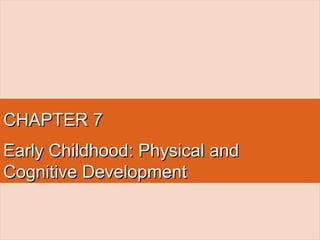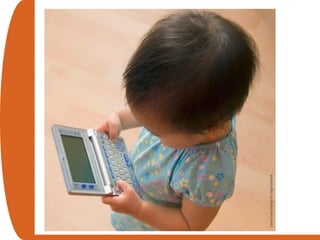Early childhood is a period of rapid physical, cognitive, language, and motor development. Children's brains develop greatly between ages 2-5, growing to 90% of adult size. Preschoolers master gross motor skills but continue developing fine motor skills. They progress from preoperational to concrete operational thinking, gaining abilities like conservation and theory of mind. Environmental factors like parenting, education, and home environment significantly influence children's cognitive development during these formative years.
























































